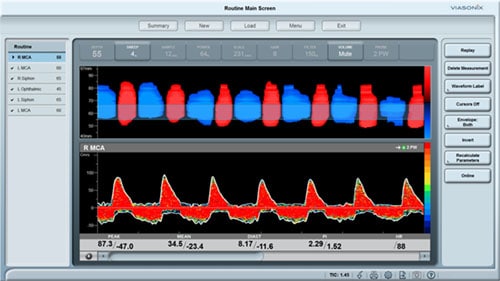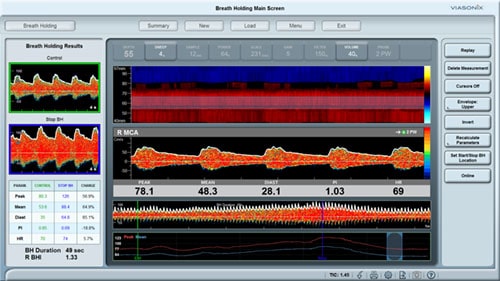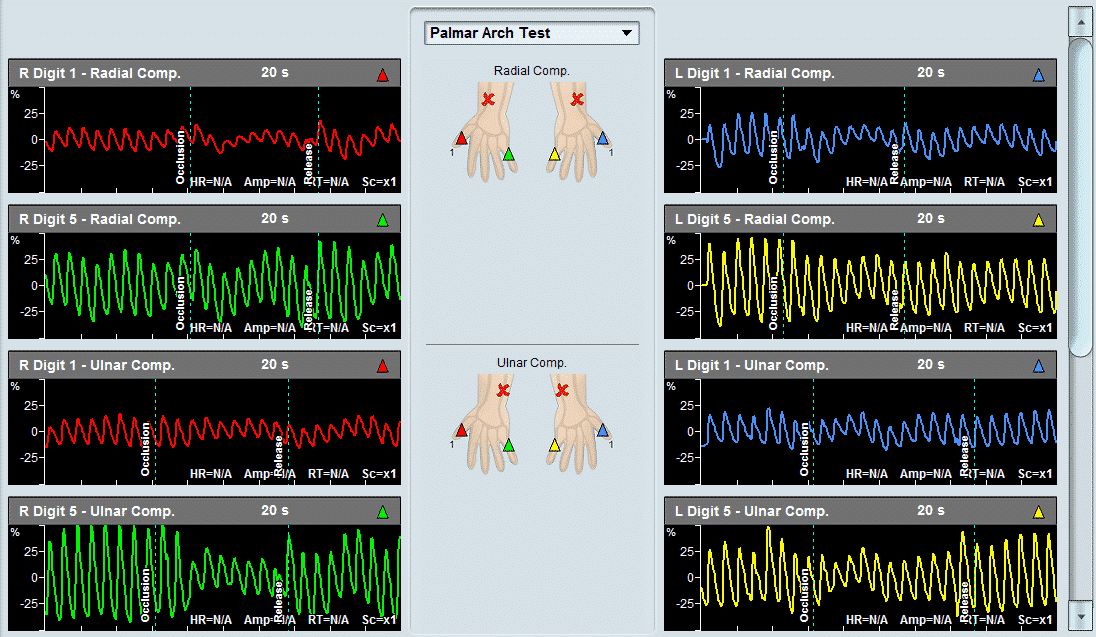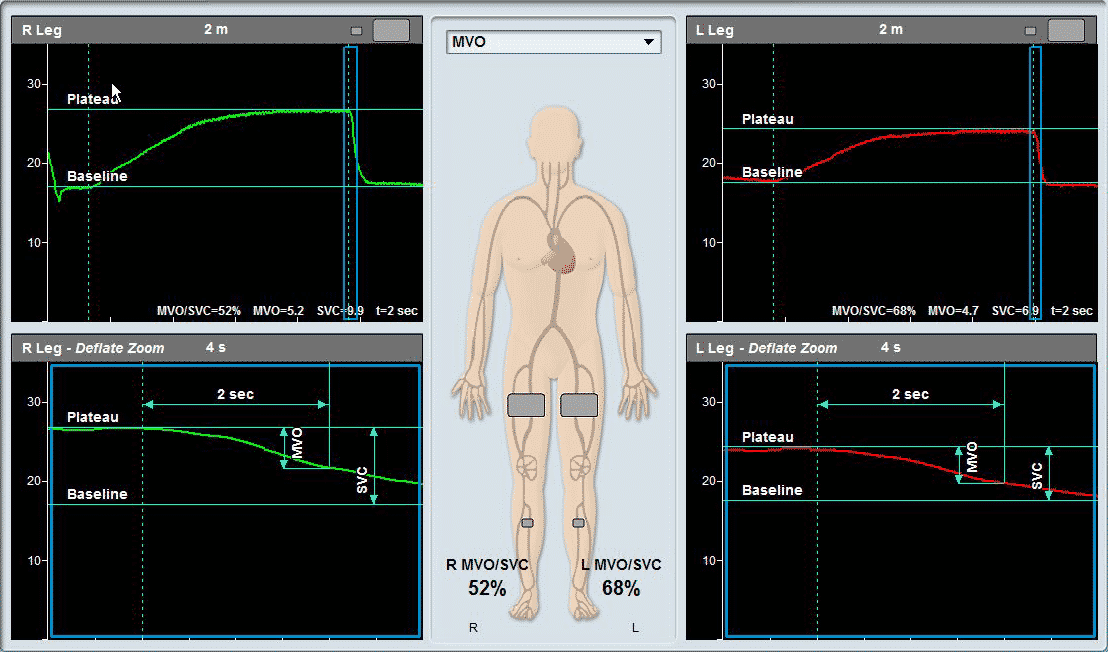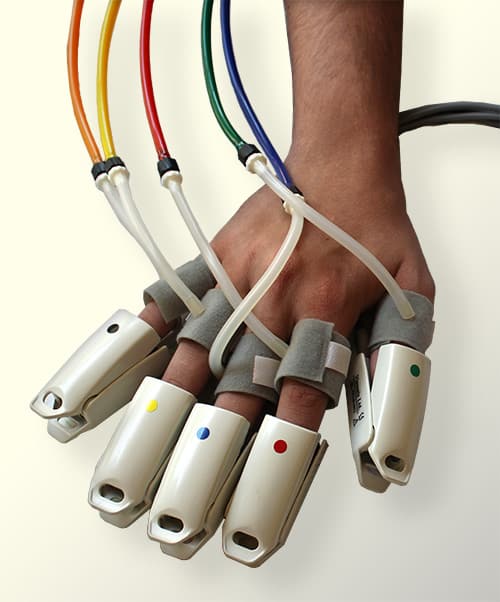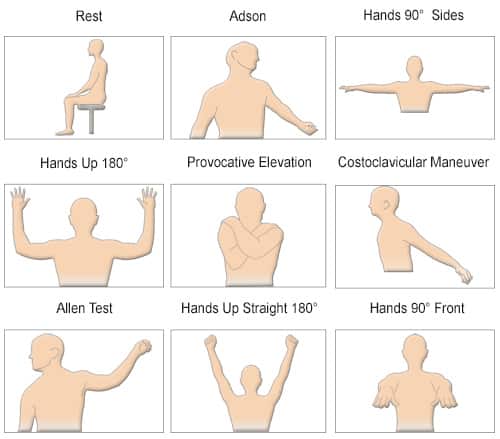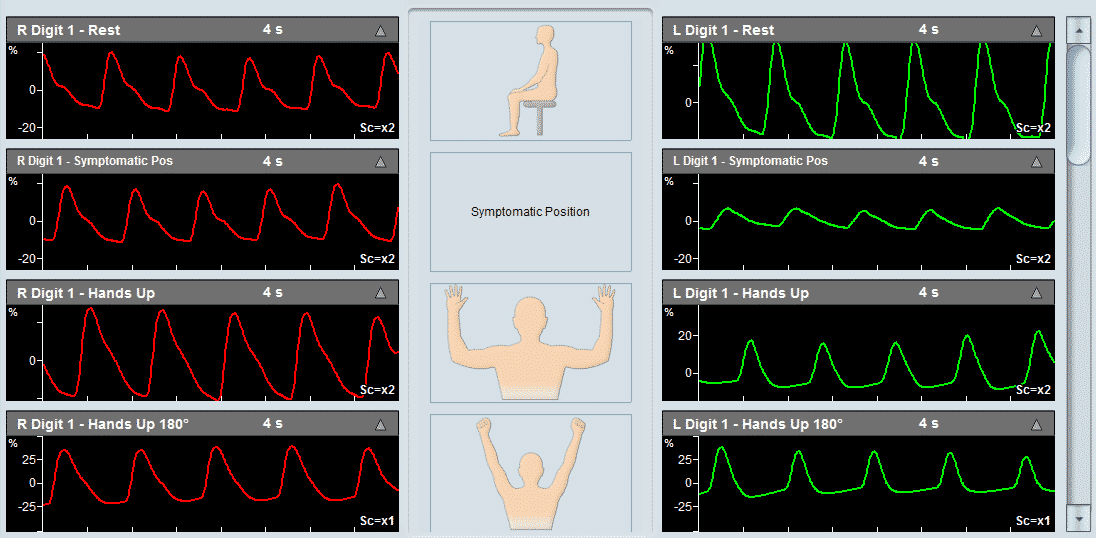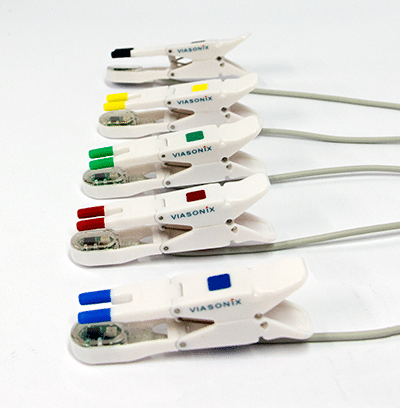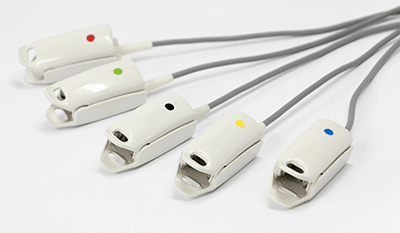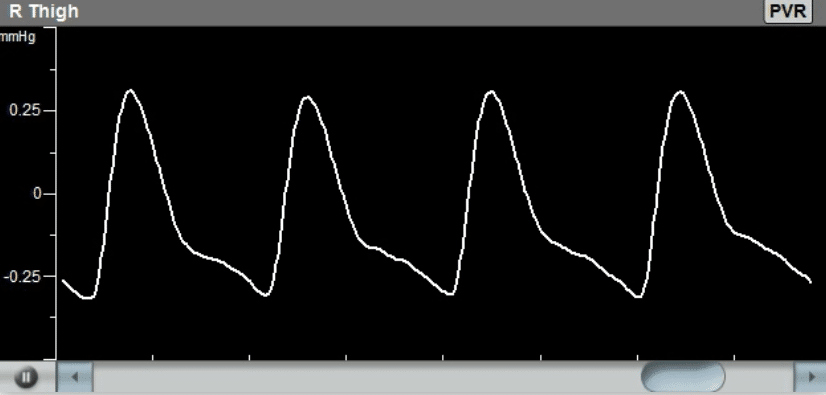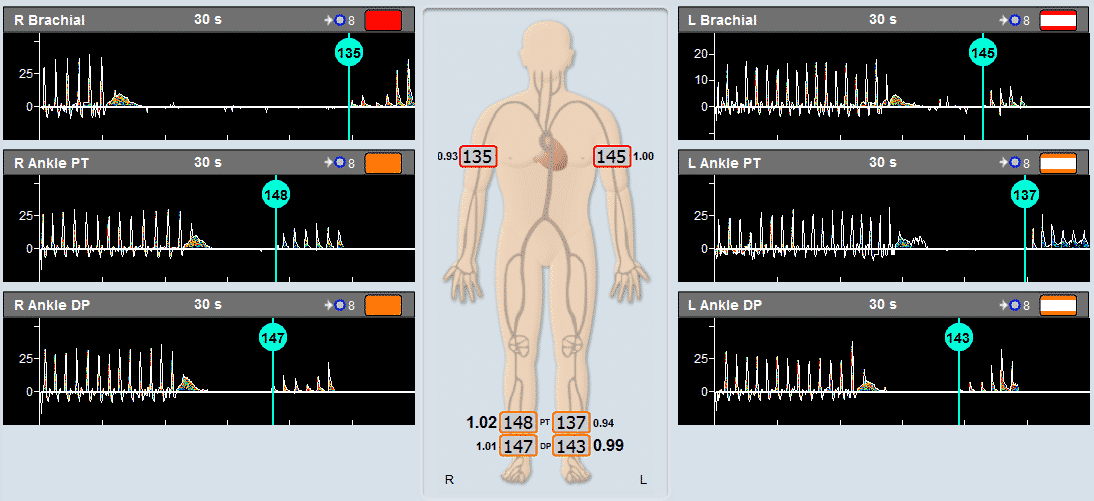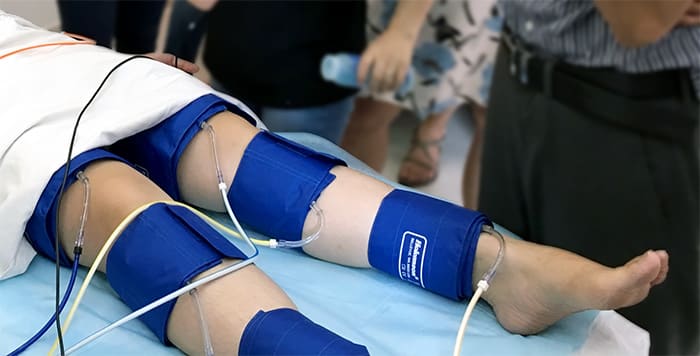Transcranial Dopplers
Delivering innovative ultrasonography technology for rapid, non-invasive, real-time measures of cerebrovascular function.
Doppler Edge
Delivering innovative ultrasonography technology for rapid, non-invasive, real-time measures of cerebrovascular function.
What is Transcranial Doppler?
Transcranial Doppler (TCD) and transcranial Colour Doppler (TCCD) are types of Doppler ultrasonography that measure the velocity of blood flow through the brain’s blood vessels by measuring the echoes of ultrasound waves moving transcranially (through the cranium).
What is Transcranial Doppler?
Transcranial Doppler (TCD) and transcranial Colour Doppler (TCCD) are types of Doppler ultrasonography that measure the velocity of blood flow through the brain’s blood vessels by measuring the echoes of ultrasound waves moving transcranially (through the cranium).
Dolphin/XF TCD Robotic Probe
Proudly introducing the X-Factor in TCD robotic solutions, with sophisticated algorithms to assist in obtaining bilateral TCD insonations in as quickly as just a few seconds! Designed for short and long-term monitoring, for use in anesthesia, in the ICU, or in the TCD lab.
Dolphin/XF TCD Robotic Probe
Proudly introducing the X-Factor in TCD robotic solutions, with sophisticated algorithms to assist in obtaining bilateral TCD insonations in as quickly as just a few seconds! Designed for short and long-term monitoring, for use in anesthesia, in the ICU, or in the TCD lab.
Dolphin 4D
Dolphin 4D
MedTechEdge are pioneers in providing the next generation TCD standalone and cost-effective systems to meet common day-to-day routine clinical practice, as well as set new industry standards. Designed by Viasonix, the system focuses on Doppler and blood flow applications, which provide steadfast clinical solutions primarily for neurology and neurosurgery departments, as well as for vascular and angiology settings.
Features
High Quality Doppler
- Fully digital Doppler processing
- High resolution colour M Mode
- Visual and audio Replay at any depth!
Wide Probes Selection
- 6 Mhz, 2 MHz, 4 MHz and 8 MHz probes
- Bialteral
- Intraoperative
Improved Workflow
- Flexible design according to your needs!
- User friendly interface designed for touch screen
- All standard TCD features and much more!
Advanced Features
- Offline Post Processing of depth, sample volume, gain, scale and filter
- Multi Depth
- Velocity Profile
MedTechEdge are pioneers in providing the next generation TCD standalone and cost-effective systems to meet common day-to-day routine clinical practice, as well as set new industry standards. Designed by Viasonix, the system focuses on Doppler and blood flow applications, which provide steadfast clinical solutions primarily for neurology and neurosurgery departments, as well as for vascular and angiology settings.
Features
High Quality Doppler
- Fully digital Doppler processing
- High resolution colour M Mode
- Visual and audio Replay at any depth!
Wide Probes Selection
- 6 Mhz, 2 MHz, 4 MHz and 8 MHz probes
- Bialteral
- Intraoperative
Improved Workflow
- Flexible design according to your needs!
- User friendly interface designed for touch screen
- All standard TCD features and much more!
Advanced Features
- Offline Post Processing of depth, sample volume, gain, scale and filter
- Multi Depth
- Velocity Profile
Dolphin Max
Dolphin Max
The only integrated battery-operated Transcranial Doppler (TCD) system now available in Australia and
New Zealand.
Ideal for Neurosurgery departments and anywhere that a TCD system needs to be moved between
patients (or in ICU department with a limited access), without comprising the image quality, ease-of use
and functionality of the DOLPHIN MAX.
Features
High Quality Doppler
- Fully digital Doppler processing
- High resolution colour M Mode
- Visual and audio Replay at any depth!
Wide Probes Selection
- 6 Mhz, 2 MHz, 4 MHz and 8 MHz probes
- Bialteral
- Intraoperative
Improved Workflow
- Flexible design according to your needs!
- User friendly interface designed for touch screen
- All standard TCD features and much more!
Advanced Features
- Offline Post Processing of depth, sample volume, gain, scale and filter
- Multi Depth
- Velocity Profile
The only integrated battery-operated Transcranial Doppler (TCD) system now available in Australia and
New Zealand.
Ideal for Neurosurgery departments and anywhere that a TCD system needs to be moved between
patients (or in ICU department with a limited access), without comprising the image quality, ease-of use
and functionality of the DOLPHIN MAX.
Features
High Quality Doppler
- Fully digital Doppler processing
- High resolution colour M Mode
- Visual and audio Replay at any depth!
Wide Probes Selection
- 6 Mhz, 2 MHz, 4 MHz and 8 MHz probes
- Bialteral
- Intraoperative
Improved Workflow
- Flexible design according to your needs!
- User friendly interface designed for touch screen
- All standard TCD features and much more!
Advanced Features
- Offline Post Processing of depth, sample volume, gain, scale and filter
- Multi Depth
- Velocity Profile
Dolphin IQ
The Dolphin IQ is the ideal cost-effective TCD module with almost identical performance and features to the Dolphin/4D. Designed with day-to-day practice in mind: it is simple to operate, enables complete standard examination protocols and has a user-friendly interface. The Dolphin/IQ is a portable module and connects to an external computer and display and boasts a range of advanced features supporting medical staff and patients.
Technical Benefits
The Dolphin covers the complete range of clinical examinations expected from a TCD system, with dedicated protocols and reports.
-
Vasospasm and SAH
-
HITS Detection
-
Monitoring
-
PFO
-
VMR and Autoregulation
-
Intracranial Stenosis
-
Collateral Capacity
-
Arteriovenous Malformation
-
Brain Death
-
Sickle Cell Disease
-
Evaluation of ICP
-
Changes Breath Holding
-
Evoked Flow
-
And more…
The Dolphin IQ is the ideal cost-effective TCD module with almost identical performance and features to the Dolphin/4D. Designed with day-to-day practice in mind: it is simple to operate, enables complete standard examination protocols and has a user-friendly interface. The Dolphin/IQ is a portable module and connects to an external computer and display and boasts a range of advanced features supporting medical staff and patients.
Technical Benefits
The Dolphin covers the complete range of clinical examinations expected from a TCD system, with dedicated protocols and reports.
-
Vasospasm and SAH
-
HITS Detection
-
Monitoring
-
PFO
-
VMR and Autoregulation
-
Intracranial Stenosis
-
Collateral Capacity
-
Arteriovenous Malformation
-
Brain Death
-
Sickle Cell Disease
-
Evaluation of ICP
-
Changes Breath Holding
-
Evoked Flow
-
And more…
Vasospasm and SAH
Cerebral Vasospasm is typically the outcome of Subarachnoid Hemorrhage (SAH) as a result of an aneurysm rupture. Early detection of vasospasm is critical since it allows timely intervention.
TCD is rather specific for this condition, and allows non-invasive, continuous bed-side monitoring. Vasospasm is characterized by increased velocities due to arterial narrowing. Severe vasospasm is defined in various international guidelines, and typically when mean velocities exceed 200 cm/sec, moderate conditions are with mean velocities between 120-200 cm/sec, and mild vasospasm is for mean velocities near 120 cm/sec. Additionally, velocities in the middle cerebral artery can be compared to internal carotid artery velocities, and the resulting ratio (Lindergaard index) can indicate cerebral vasospasm when it is greater than 3.
Typically, vasospasm is a developing pathology, and requires day by day monitoring of blood flow velocity values. The Viasonix Dolphin system provides a dedicated vasospasm protocol that allows setting velocity thresholds for immediate identification of the severity of the vasospasm condition. In addition, an immediate velocity trend analysis is provided in order to help identify the critical time whereby intracranial velocities are dramatically increased, and immediate clinical intervention is required.
The Dolphin also provides an ideal platform for the identification of the critical highest intracranial velocities. All data is saved both in the time domain and at all depths along the ultrasound beam, which allows the examiner to review the data after freeze to explore the measured blood flow velocities.
Alteriovenous Malformation
Arteriovenous Malformation (AVM) relates to a condition whereby the arterial flow bypasses the capillary circulation and connects directly to the venous drainage, thus not allowing for appropriate tissue perfusion.
This condition is characterized by low resistance to blood flow, resulting in high volume flow rates. AVM is therefore characterized by high mean velocities – although lower then with severe vasospasm – which are coupled with a low pulsatility index (PI).
The Viasonix Dolphin multi-depth options allows to simultaneously view and measure the blood flow spectrum at different depths along the beam and quickly identify deviations from expected waveform patterns.
Evaluation of ICP Changes
Intracranial pressure (ICP) is the pressure inside the skull and thus in the brain tissue and cerebrospinal fluid. Elevated ICP has a direct effect on the cerebral blood flow velocity and its’ pulsatility, which can be detected with simple transcranial Doppler (TCD) measurements.
The Viasonix Dolphin has the ability for multi-parameter analysis which allows close evaluation of cerebral condition. In addition, dedicated trend analysis displays help to closely monitor changes in cerebral condition for timely identification of deterioration of cerebral perfusion.
Intracranial Stenosis
Intracranial stenosis relates to a focal narrowing of the artery, either as a result of an atherosclerotic lesion or as a result of external compression due to a tumor.
TCD will easily identify a local increase in blood flow velocities, characterized by the fact that proximal or distal to the stenosis the velocities will be much lower that at the site of lesion itself. Peak focal velocities above 150 cm/sec can indicate an arterial stenosis. However, if the severity of the stenosis is beyond its’ critical level, velocity signals may be diminished.

